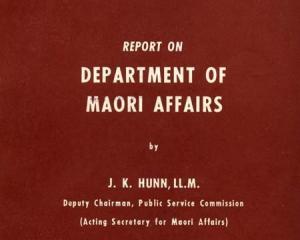There is a man on the phone who says the future of the world depends on arts lovers realising they are better at maths than they think they are. He is not joking.
Speaking from Auckland the day after arriving in New Zealand for a nationwide speaking tour, Prof Marcus du Sautoy, of the United Kingdom, does not sound like jet-lag is slowing his mind or speech.
The University of Oxford professor for public understanding of science, renowned mathematician and award-winning science communicator is keen to explain why he is here, courtesy of the Royal Society of New Zealand, to talk about The Art of Mathematics.
''There is a terrible divide ... between the arts and the sciences,'' Prof du Sautoy, OBE, declares.
''In fact, the two are highly related.''
Years of interacting with maths and with artists has shown him both are interested in similar structures but have different languages for exploring the same concepts.
''Take, for example, music ... it is quite an abstract world, a world of patterns.
''And that is often the connection. I call mathematics the science of patterns. A mathematician is a pattern searcher. And when you listen to music you are often sub-consciously recognising patterns and mutations of ideas.''
French composer Olivier Messiaen used prime numbers to create an interesting and aurally satisfying rhythmic structure in his music. Mozart was obsessed with numbers.
''The Magic Flute, which is one of my favourite operas, the overture, I think, uses something called the golden ratio,'' Prof du Sautoy says.
According to the golden ratio, two objects are said to be in correct proportion when the ratio of one to the other is the same as the ratio of the bigger of those objects to the sum of both objects.
''At a key moment in the overture there are a dramatic three chords which are repeated three times. If you count the bars up to that point and then on from there to the end of the overture, it's as close as you can get to the golden ratio.
''He was a Mason. And the Masonic order were also obsessed with the golden ratio; perfect proportions in buildings and so on.''
Even if a composer, or writer, or painter did not deliberately include a mathematical pattern, it would still be there, he says.
''That's because mathematics is really the language of nature. And often our artistic forms are our way of responding to the natural world around us.''
At the same time that there is hidden maths in the arts, mathematicians are driven by strong aesthetic values, Prof du Sautoy says.
''For me it's not just important that you have a true statement about numbers, because some of those can be very boring. The role of the mathematician is to sow stories about numbers which have some exciting narrative to them.
''Often it is not the final QED [proof] that's the most exciting thing, but the journey that you take from ideas you understand to get to a new place.
''When I am composing my mathematics, I am looking for mathematical ideas that have an element of surprise. Giving my listeners or my readers that kind of `aha' moment of transformation is essential to any piece of art, as well.''
In recent years, the number of science communicators has been growing. It has grown, in part, out of a public crisis of confidence in science, Prof du Sautoy says.
''Because scientists weren't stepping up to the plate and explaining their ideas, people started to mistrust it. Genetically modified crops, or medical advances; people were frightened of them because they didn't understand them.
''There's been the recognition that science needs ambassadors ... an idea doesn't really begin to live until you have communicated it, brought it alive in the mind of someone else.''
Talking about the shared ground of mathematics and arts is important, he says.
Many people feel alienated by maths. But he wants to demonstrate that ''more people are good at maths than they realise''.
''People who love listening to music or respond to ideas in the visual arts or literature, I want to give them a way in to appreciate a subject that maybe they didn't like.''
The world of numbers and science is having a big impact on society. And people are being disenfranchised from many decisions which affect them if they do not engage with the science, he asserts.
''We have to find ways to connect and talk with each other, even if we come from what seem like very different worlds.''
For example, if you don't know what a stem cell is, it is difficult to have a debate about the ethics of stem cell research.
''Or climate change ... it's just not good enough to rely on being told by others. That's what being part of society is all about.
''You really do have to understand the numbers to understand that unless we do something, we really are heading for serious trouble.''












